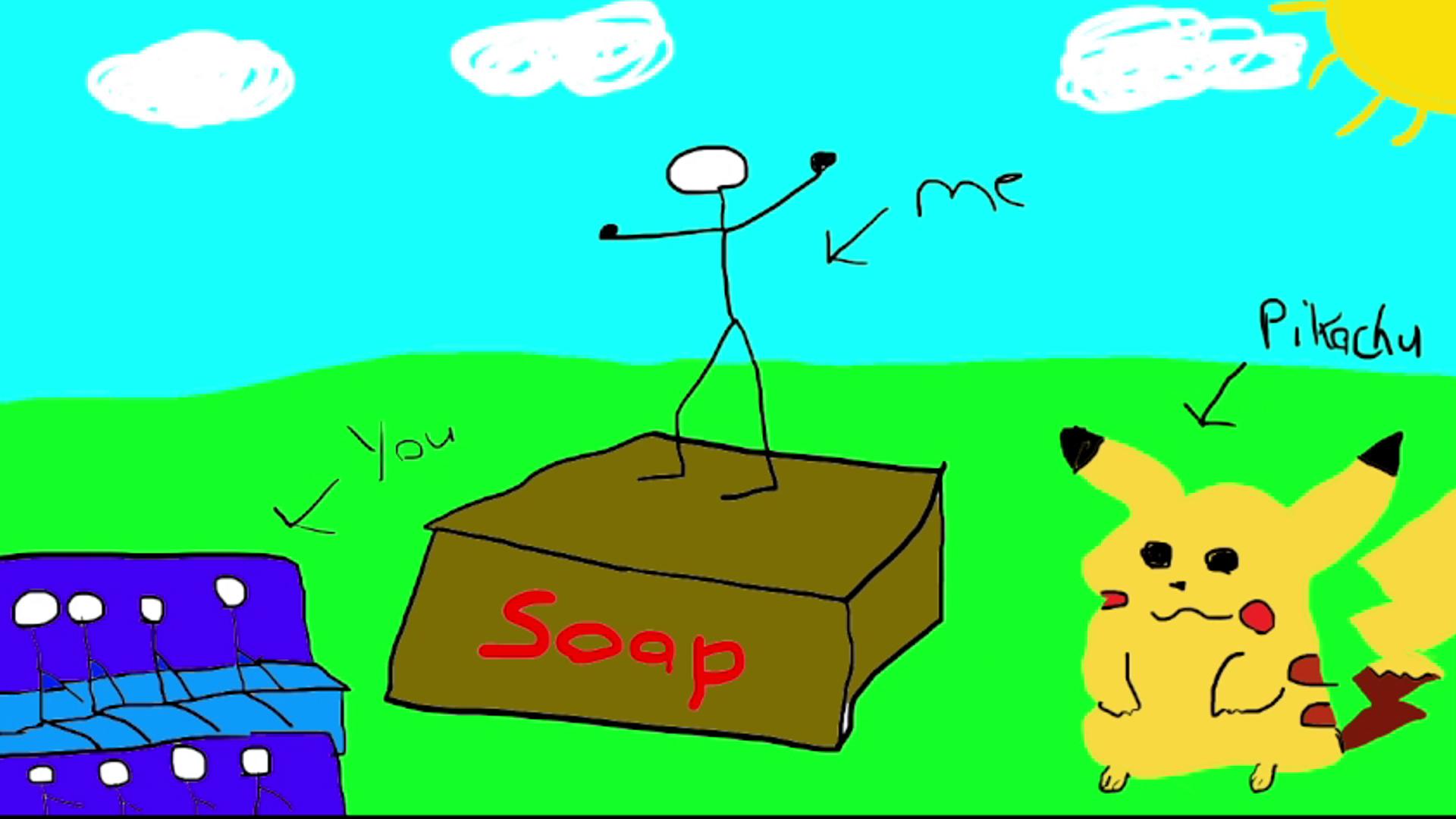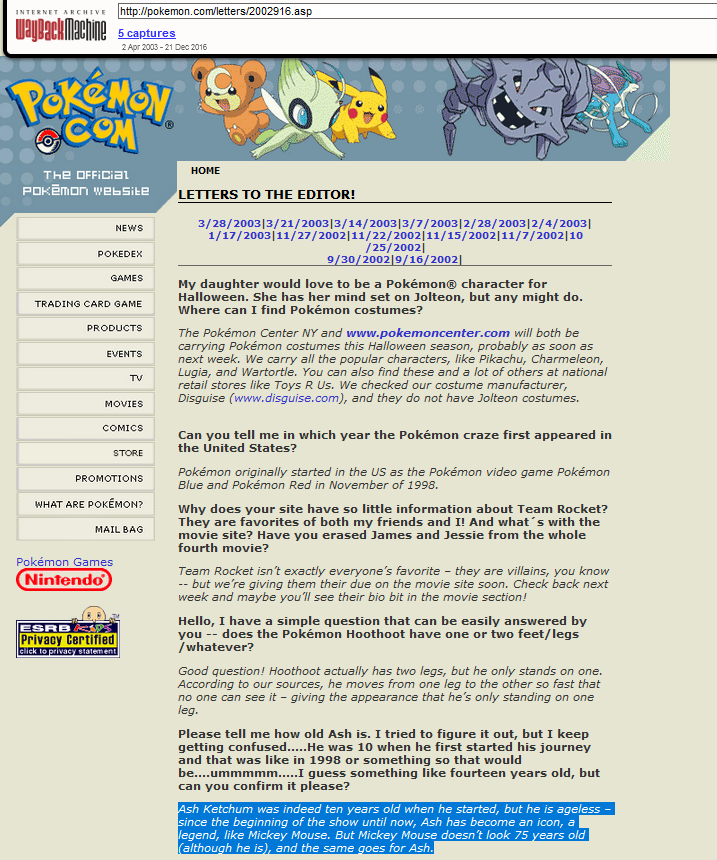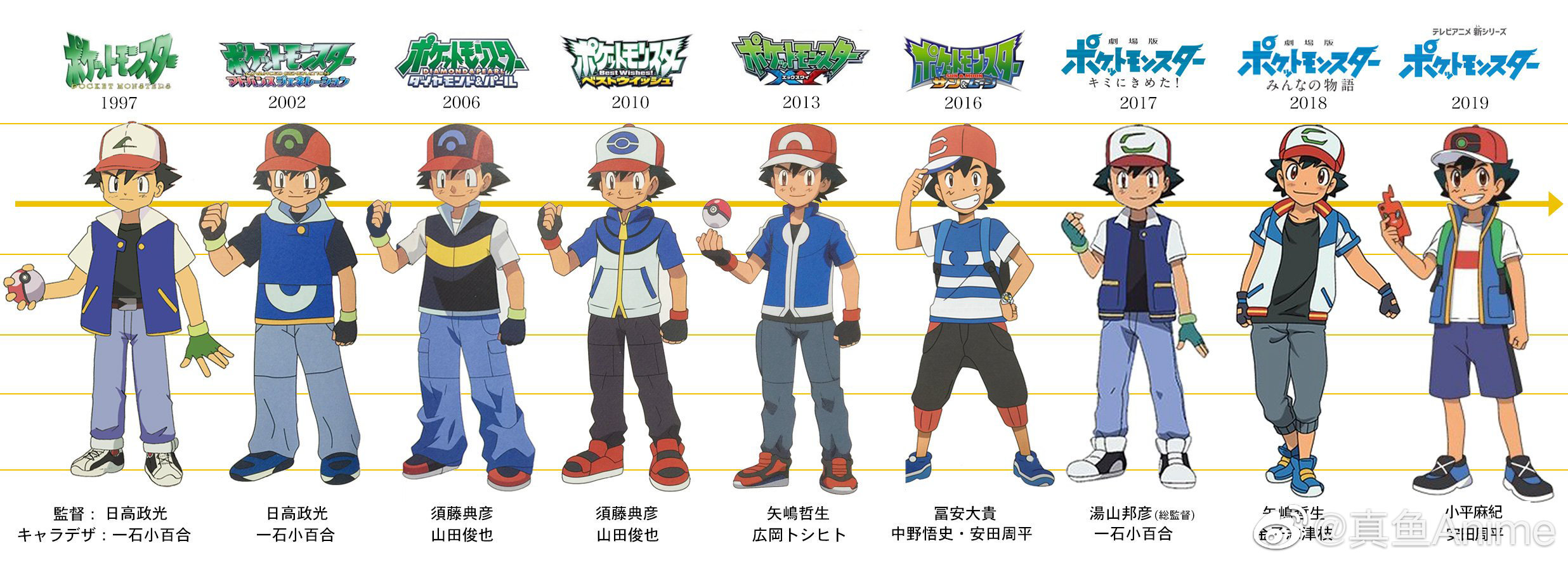

Like most online communities, the Pokemon fandom has absorbed a lot of received wisdom over the years about how the show was made. This included various assumptions about the personalities behind the creation of the show and headcanons that people took seriously as canon. Most of it is bullshit. I had to unlearn a lot of it, so I'm going to try to help with some of the more common ones I've run into.
1. Did Takeshi Shudo create Lugia?
Kind of. GameFreak has designed a few Pokemon over the years in order to be used in the movies -- i.e., most "mythical Pokemon." Lugia's creation seems to have come from an idea that Shudo came up with that Ken Sugimori then designed. Lugia's purpose was to be the mascot for Movie 2, but it ended up being a box legendary for Pokemon Silver, much to Shudo's surprise.
A lot of hay has been made about Shudo's views on Lugia due to Dr. Lava's excellent column about it. Even Dr. Lava has had to push back on fans on twitter, saying "I think some might've been a game of telephone from a video I wrote (linked in the original tweet). Shudo created the CONCEPT of Lugia for the movie, he didn't design it." This pretty well sums it up.
2. Did Takeshi Shudo disprove Pokeshipping (the fan pairing between Ash and Misty)?
Yes and no. Shudo had much to say about Misty's role in Movie 2, but here's the part you want to read:
Kasumi has no romantic feelings for Satoshi. If Kasumi's romantic feelings for Satoshi were to become one of the themes of "Pokemon," the entire structure of the "Pokemon" series would be destroyed...Even if Kasumi develops romantic feelings for Satoshi, she cannot interfere with the relationship between Satoshi and Pikachu. Even if a childish love affair with Satoshi were to develop in Kasumi, if it were depicted, "Pokemon" would have another built-in theme, and the basic theme would not only be complicated but also diluted. In "Pokemon," even if Kasumi has romantic feelings, they are only as significant as the condiments in a dish, and the condiments that complicate the flavor of the theme of "Pokemon" are clearly an obstacle. To begin with, the character of Kasumi does not have any romantic feelings for Satoshi. Kasumi may indeed be old enough to fall in love, but "Pokemon" is neither a girls' manga nor a cellphone novel.
1. Did Takeshi Shudo write that 10 year olds have sex in Pokemon?
Wishful thinking on Resetera's part, but no.
Here is the excerpt that people quote to support this:
When children complete primary school at the age of ten, they are legally considered as adults....This is the “All Primary School Graduates are Adults Law”. Or PGAL (Primary Graduates Adulthood Law) for short. Basically, as of the April following your tenth birthday... you are able to gain a Pokémon License and are permitted to carry Poké Balls to capture Pokémon. However, due to a law for preserving natural habitats, you are only permitted to have six balls at a time. Of course, there's more to being a legal adult than the right to own Pokémon.One of the main things Shudo tried to do as head writer was establish some realism within the Pokemon setting. In doing so, he added lore that, for the most part, hasn't been contradicted by later games and anime. One of the things that doesn't make sense about Pokemon Red and Green, if looked at objectively, is why a child is allowed to own supernatural animals and use them to fight others, and travel around the entirety of Kanto on his own. Shudo added some tongue-in-cheek lore about 10 year olds being legal adults to make this make sense. Marriage was one example of this; no one ever brings up taxes though. I wonder why.
All adult rights are granted. Under 18s don't qualify as minors, not even 14 or 15 year olds. For example, if you were to steal something from a convenience store, the consequences would be more than just the shopkeeper getting mad at you, the police would arrest you. And no matter how much your parents try to apologise, you are still culpable as an adult. The most important point of this law is... after leaving primary school you make your own life choices.
You can strive to achieve higher education or take over the family business. Naturally, you're free to search for a job you like as well. If they were so inclined, an eleven year old boy and girl are even free to marry without parental consent. You are considered an adult right down to details like traffic violations. ... And you pay taxes like an adult too.
“What's your relationship with that boy?” The old man asked.Worth noting for additional context: Takeshi Shudo was vocally against lolicons when talking about his work on Magical Princess Minky Momo. He referred to them as "perverts," and denounced people for treating anime girls as sexual objects. No, he did not want to imply that minors had sex in the Pokemon world.
“Huh?” Misty asked in return.
“Are you his girlfriend or are you betrothed to him or something?”
“Betrothed?” Misty was unfamiliar with the word.
“It means you're making plans for marriage...”
“Marriage...!? I'm only ten years old.”
While Ash wouldn't notice due to being with her all the time, most people would consider her quite the beauty, in fact, when she was 17 she appeared on the front cover of the new year bumper issue of “Pokémon Pals” alongside a flower Pokémon known as Bellsprout.
Delia wiped the tears from her eyes and wiped them on her shoulder. ... Tears, huh... I'm still young, but I'm already the mother of a full fledged adult at my age... I've had to put on a brave face as his mother... I can recall all the past ten years with Ash, ten years, ten months and ten days... All of the hardships... The times it was too painful to go on... Motherhood really was a struggle... But it was worth it. This is how Delia felt the day her only son left home.
1. Did Takeshi Shudo kill off the main character of another anime because he was mad at a toy company?
Yeah, he did that shit.
It was Minky Momo, and in the sequel anime he gave her parents AIDS because he felt like people weren't taking the AIDS crisis seriously (this was 1992). I haven't watched all of Minky Momo myself, but these are apparently all very poignant and well done within the context of the show. Crunchyroll has Minky Momo, so give it a try.
2. Did Takeshi Shudo intend for Ash to age?
Yes, but.
Shudo's idea for Pokemon's ending is pretty well known: he wanted Pikachu to lead a Spartacus-like rebellion and Team Rocket would act as the mediators for the conflict. The final scene was intended to be Ash as an older man reminiscing about his days as a youth and then flashback to being a child again, and going out to seek the meaning of life, yada yada. There's also that old trailer of the first movie with an adult Misty, and maybe in a pre-Porygon world, the movie would've included that scene. Who knows?
The entire premise is reminiscent of Stand By Me, which he references as an inspiration for the "theme" of Pokemon he got from the games prior to working on the anime. From that column where he cancels Pokeshipping:
The theme of "Pokemon" is the relationship between the fictional creatures called Pokemon and humans, and the growth of a boy named Satoshi (which means the childhood of all humans) into an adult, for better or worse. At least, that was the theme I intuitively decided on when I took on the task of series organization for "Pokemon." I have already mentioned in this column that an important theme of "Pokemon" is to make a so-called "Stand by Me." It is an extremely universal human theme that we all grow old and become adults, even if we don't want to, and I myself have discussed this theme many times in episodes of "Magical Princess Minky Momo."


